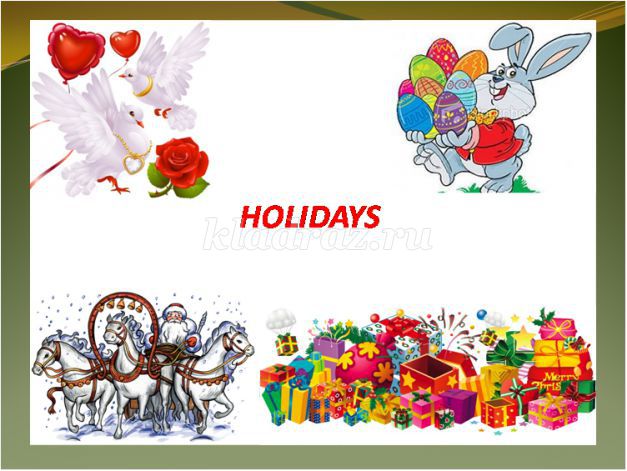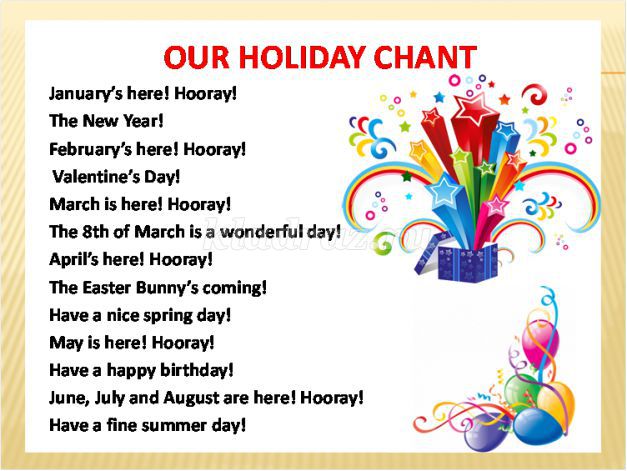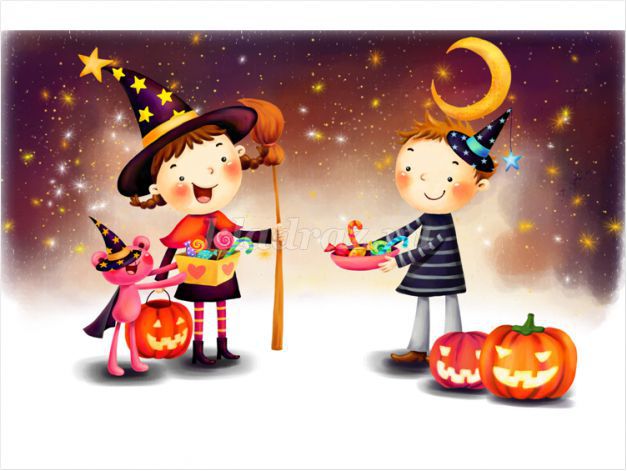Викторина на тему "Праздники" по английскому языку для 5 класса
Викторина "Праздники" по английскому языку для 5 класса

Описание работы: данный материал предназначен для учеников 5 класса, расширяет кругозор учеников о праздниках в англоязычных странах. Материал может использоваться в рамках творческого проекта для предметной недели английского языка. Благодаря простым правилам и красочным картинкам обучение становится игрой, приносящей удовольствие. Материал будет полезен учителям английского языка, а также родителям воспитанников.
Цель: развитие лексических навыков по теме “Праздники”.
Задачи:
- развивать навыки говорения, чтения, письма и аудирования,
- расширить кругозор о праздниках, обычаях и традициях в англоязычных странах,
-формировать умения работать в группе, развивать логическое мышление, языковую догадку, память, внимание, воображение,
-воспитывать чувство коллективизма.
Оборудование: раздаточный материал
Ход
1.Организационная часть.
2.Основная часть.
Задание 1. Конкурс песен.

Night is dark and stars are green.
Let’s have a party “Halloween”!
Ghosts and witches can be seen.
Trick or treat, trick or treat!
Give us something good to eat.
The New Year !
The New Year !
The New Year !
The New Year !
Let us sing,
And let us play!
Father Frost
Father Frost, Father Frost!
Bring many toys
For little girls
And little boys!
Easter
Easter eggs are prettier
Than any I have seen,
One is red and one is blue,
And one is white and green.
Easter time means spring.
Leaves and grass and buds appear
In the forest.
In the spring
All the birds begin to sing.
Birds will weave green grass and make
Baskets that the bunnies take
To city children far and near,
To let them know that spring is here.
And that is why on this Easter day,
Children find bright eggs and say,
“Spring is here. Just look and see
What our bunny has just brought for me!”

Group1: Easter is one of the most popular holidays.
Group2: We like to paint boiled eggs and eat them on Easter Sunday.

Каждая команда получает тексты о разнообразных праздниках. Задача команд - ответить на вопросы.Следующее задание для команд - выбрать два текста и рассказать их. Команда должна сама поставить вопросы к текстам, которые они выбрали.

The evening of the 31st October is a very popular ancient festival. It was the end of the Celtic year and the night when witches and evil spirits had to be driven away. Now it is occasion for fun, especially for children. In the evening they dress up, usually as witches with ugly face masks. Carrying turnip lanterns, they visit nearly houses. If they are invited in, they sing a song, recite a poem or perform a trick and then they are given sweets and apples. Sometimes they play traditional Halloween games such as ducking for apples.
April Fool’s Day
If you are not very careful on the first of April in Britain, you may become an April Fool. It is the day on which people play tricks on each other. For example, someone might say to you, “Oh, look at that huge spider behind you!” when there is no spider. If you turn round or scream or jump, you are an “April Fool”.
Valentine’s Day
The 14th of February is a very romantic day when people send cards and flowers — often red ones — to people they love or like.
The custom of sending romantic cards began in the 18th century. These were often decorated with hand-painted hearts and flowers and sometimes the senders wrote love poems.
Easter
On Easter Sunday people go to church, give thanks to Christ. Families have a big dinner on that day. All the members of the family sit around the table and eat delicious dishes. People always paint boiled eggs and eat them on Easter Sunday. Children like this holiday because on that day they often play different games with painted eggs. In Great Britain Easter Bunny is one of the symbols. On Easter Sunday English children get chocolate rabbits or eggs.
Guy Fawkes Day
Guy Fawkes Day is an English festival which takes place on the 5th of November every year. It celebrates the death of a man called Guy Fawkes who tried to blow up the English Parliament in 1605. In the evening, people gather round and set fire to the piles. One can see children with figures, made o f sacks and straw and dressed in old clothes. On November 5th, children put their figures on the bonfire, burn them, and light their fireworks.

In some villages and towns of England pancake races take place every year. These races are usually run by housewives. There are special rules about pancake races. While running the race, they must toss the pancake three times and catch it back on the frying-pan. If the pancake falls down, the runner may pick it up and toss it again. The other members of the family watch the runners and cheer “Run, Mum, run quickly!”

Nearly all adults in Britain stay up until midnight on the 31st of December to celebrate the beginning of the New Year. In London’s Trafalgar Square, thousands of people gather to hear Big Ben chime. Then they all join hands and sing“Auld Lang Syne.” It is a special celebration in Scotland, where it is called Hogmanay. After midnight, people start visiting each other. The first person to enter a house, The First Foot, is a very important person because he is thought to bring good luck to the house for the whole year. The First Foot must be a man, preferably tall and dark-haired, and he must bring coal or wood for the fire, and something to eat and drink. This means that the household will be warm and have enough food and drink throughout the year.
Answer the questions
1) When did people first start sending Valentine cards?
2) What do you know about the First Foot?
3) What Easter symbols do you know?
4) When do people sing Auld Lang Syne?
5) How do pancake races take place in Great Britain?
Work in pairs.
1) What did you know about any of these festivals?
2) Which of the customs and festivals did you most enjoy reading about?
3) Which one sounds most enjoyable?

Список литературы
1.Баграмова Н. В. Интерактивный подход в обучении иностранным языкам.Санкт-Петербург, 1996.
2.Белова Л. В., Рахманкулова Л. К. Некоторые приёмы работы с картинками на уроках английского языка // Иностранные языки в школе.- 1991.- № 2.-с.72-75.
3. Бутко Г.В. Наглядные пособия на уроках английского языка //Иностранные языки в школе.- 1988.- № 2.- с. 51-52.
4. Калинина Л. В. Предметная неделя английского языка в школе, Ростов-на-Дону “Феникс”, 2006.
Презентация на тему: Викторина "Праздники" по английскому языку
Рекомендуем посмотреть:
 Мифологическая викторина с кроссвордами для учащихся 5-7 классов
Мифологическая викторина с кроссвордами для учащихся 5-7 классов
 Викторина с ответами для 5 класса ко Дню Победы
Викторина с ответами для 5 класса ко Дню Победы
 Игра викторина по английскому языку для 5 класса с ответами. Рождество
Игра викторина по английскому языку для 5 класса с ответами. Рождество
 Викторина по английскому языку для 5 класса с ответами. Рождество
Викторина по английскому языку для 5 класса с ответами. Рождество
Похожие статьи:
Игра «Счастливый случай» для 5-8 классов
Игра «Поле чудес» для 5-6 класса на тему: Цветы
Классный час на тему «Тайны леса», 5-6 класс
Участник №73 профессионального конкурса педагогического мастерства с 15 сентября по 15 декабря 2016 года
← Сказка "Осенний урожай" для школьников 6 класса на английском языке с презентацией | Викторина по английскому языку с ответами, 5 класс. Знатоки английского языка →
|
|
Автор: Марина Сергеевна Долгих
Опубликовано: 3060 дней назад (9 декабря 2016)
Просмотров: 20067
Рубрика: викторины
|
+1↑ Голосов: 1 |



